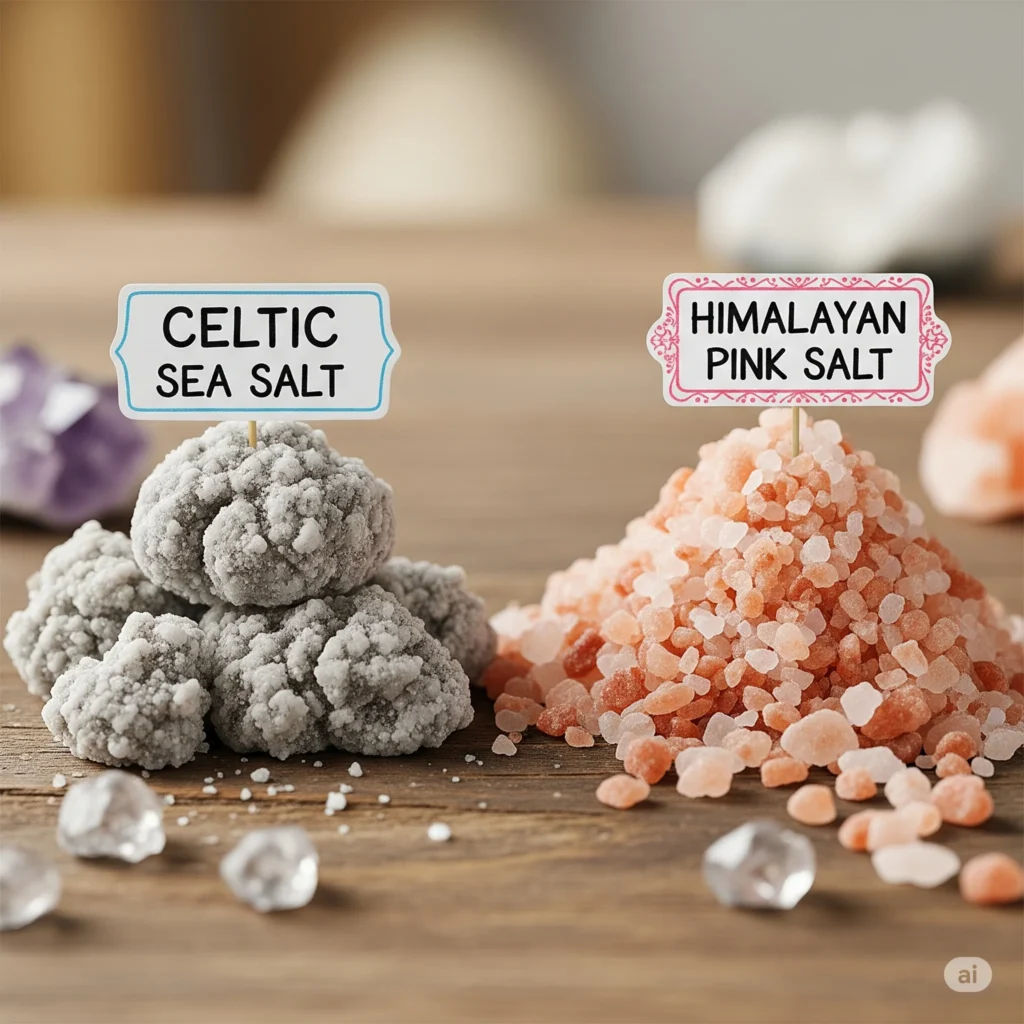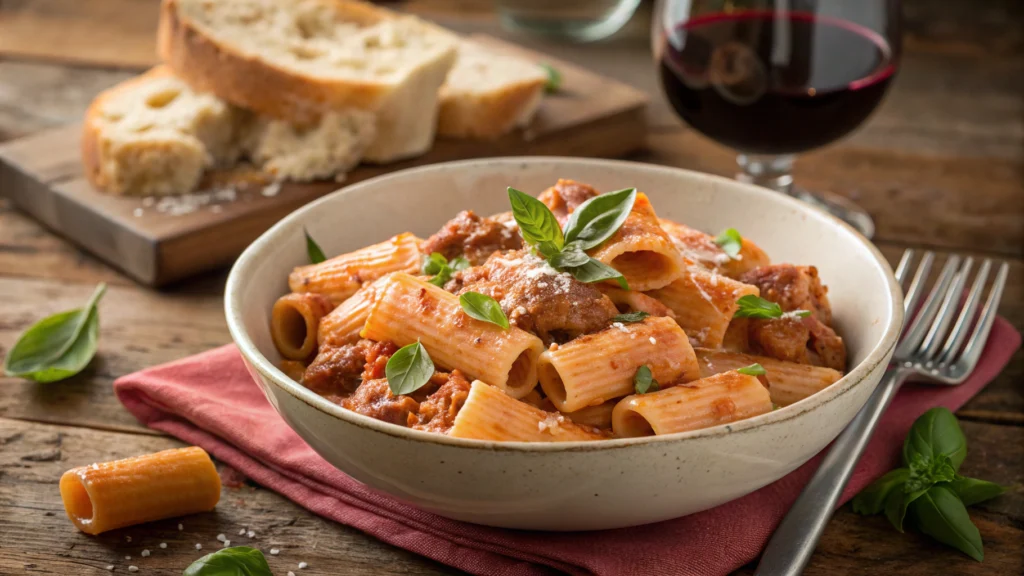
What Is Celtic Salt and Its History
Where It Comes From
Okay, so Celtic salt—also called sel gris if you’re feeling fancy—is this awesome sea salt from Brittany, France. Picture these cool tidal pools along the coast where seawater just chills and turns into these gray, mineral-packed crystals. It’s got stuff like magnesium and calcium, which gives it that unique gray vibe. It’s not like boring table salt; it’s got this damp, ocean-y feel that’s super authentic. Honestly, it’s like a little piece of the French coast in your kitchen.
How They Make It
This salt’s been harvested forever, like 2,000 years kind of forever. These folks called paludiers (basically salt wizards) rake it by hand from clay-lined pools where the sun does all the work evaporating the water. No machines, no bleaching—just pure, old-school vibes. It’s why Celtic salt’s got that moist, chunky texture and all those minerals. It’s like the salt’s saying, “I’m from the earth, deal with it!” Pretty cool, right?
How It Went Global
Back in the day, this was just a Brittany thing, but now Celtic salt’s popping up everywhere—Guatemala, Hawaii, you name it. Chefs and health nuts (like me, guilty!) can’t get enough of it. TikTok’s basically obsessed, with everyone raving about how it’s way better than regular salt. It’s gone from French secret to global superstar because people are all about that natural, unprocessed life. You’ll see why once you try it.
Can you cook with Celtic salt?
It’s a Kitchen Rockstar
You can totally cook with Celtic salt! It’s awesome for sprinkling on roasted veggies or a juicy steak for that extra pop. The big, chunky grains give a nice crunch, which is great when you want your food to feel a bit fancy. Soups, stews, whatever—it works in everything. It’s like the cool cousin of table salt that shows up and makes everything taste better.
That Texture and Taste Tho
Celtic salt’s got this wet, gritty vibe that’s nothing like the fine stuff you’re used to. It hits your taste buds with this slow, briny burst—like a wave crashing in your mouth. The texture can make your dish feel a little extra, especially if you’re sprinkling it on at the end. But heads-up: it’s strong, so don’t go wild, or your dish might taste like the ocean in a bad way.
Tips for Cooking with It
Grind it up if you need it finer for stuff like baking or sauces—those big crystals can be a bit much otherwise. Keep it in a sealed container so it doesn’t turn into a clumpy mess. Oh, and if you’re baking, watch out ‘cause it’s wetter than regular salt, so your dough might act weird. Just use a light hand and sprinkle it on your finished dish for that chef-y touch. Trust me, it’s a game-changer.
How to Consume Celtic Salt?
Sneaking It into Your Meals
Swapping Celtic salt for regular salt is super easy. Sprinkle it on eggs, toss it in pasta sauce, or jazz up your avocado toast. It’s got those extra minerals, so you’re kinda sneaking in some health points while making your food taste amazing. You can even mix it into spice blends for BBQ or whatever. It’s like, why use boring salt when you can use this?
Fun Ways to Use It
Get this: you can do more than just cook with it. Mix a tiny bit into your water for a DIY electrolyte drink—great for after a sweaty workout or a hot day. Or, make a scrub with some olive oil for a spa-day-at-home vibe. Some folks even put a couple grains under their tongue before chugging water, saying it helps hydration. Sounds wild, but I’m tempted to try it. You in?
Hydration Game Strong
Celtic salt’s got sodium, potassium, and magnesium—basically the electrolyte squad that keeps you hydrated. Pop a pinch in your water bottle, and it’s like giving your body a high-five after a run. It’s not gonna replace your Gatorade, but it’s a solid way to keep things balanced, especially if you’re sweating buckets. Just don’t overdo it, or you’ll mess up the vibe.
Celtic Salt Trick Recipe
Easy-Peasy Quinoa Bowl
Wanna try Celtic salt in action? This roasted veggie quinoa bowl is stupidly good and easy. It’s perfect for a quick dinner or impressing your friends with your “I’m basically a chef” skills. The Celtic salt makes the veggies sing, and it’s ready in like 30 minutes. Plus, it’s healthy, so you can feel all smug about it.
How to Whip It Up
Crank your oven to 400°F. Rinse 1 cup of quinoa (don’t skip this, it’s gritty otherwise) and cook it in 2 cups of water or veggie broth for about 15 minutes. Done? Cool, set it aside. Grab a bell pepper, zucchini, yellow squash, and red onion—slice ‘em up. Toss with 2 tablespoons olive oil, 1 tablespoon balsamic vinegar, a teaspoon of oregano, and ½ teaspoon Celtic salt. Roast on a baking sheet for 20-25 minutes. Mix it with the quinoa, add a pinch more Celtic salt if you’re feeling it, and dig in.
Why Celtic Salt Makes It Pop
The Celtic salt sprinkled on those roasted veggies? Chef’s kiss. It brings out their sweet, caramelized goodness and adds a little crunch. The quinoa soaks up that briny flavor, making every bite next-level. Don’t dump too much on, though—let the salt do its thing without stealing the show. Throw on some fresh herbs if you’re extra, and you’ve got a dish that’s basically Instagram-worthy.
Is Celtic Salt Actually Healthy?
What’s in It?
Celtic salt’s got over 80 minerals like magnesium, calcium, and potassium—way more than plain old table salt. A little ¼-teaspoon scoop has about 480 milligrams of sodium, plus tiny bits of other good stuff. It’s not gonna make you Superman, but it’s a nice upgrade from the processed junk. Think of it as salt with a side of health sprinkles.
Table Salt vs. Celtic Salt
Table salt’s like the boring cousin who got all the flavor sucked out of it. It’s just sodium chloride with some weird additives. Celtic salt? It’s the cool one that skipped the factory and kept its natural vibes. It’s got a bit less sodium per scoop, which is nice if you’re watching that, but you still gotta chill on how much you use. Both can mess you up if you go overboard.
What’s the Science Say?
Everyone on TikTok’s hyping Celtic salt like it’s a miracle cure—better hydration, digestion, all that jazz. But the science is kinda like, “Eh, maybe.” The minerals are nice, but you’re not getting enough to change your life. The American Heart Association says sea salts like Celtic aren’t that different from table salt if you’re chugging too much sodium. So, use it, love it, but don’t expect it to fix everything.
What Are the Side Effects of Taking Celtic Salt?
Sodium Can Be Sneaky
Celtic salt’s still salty, duh. That ¼-teaspoon has about 20% of your daily sodium limit (2,300 milligrams, says the experts). Too much can jack up your blood pressure or stress your heart. If you’ve got high blood pressure or kidney stuff going on, take it easy. It’s awesome, but don’t be that person who salts everything like it’s a snowstorm.
Mineral Overload? Maybe
The minerals in Celtic salt are cool, but if you go nuts, you might throw things out of whack. Too much magnesium could make your stomach grumpy, and potassium’s tricky for folks with kidney issues. It’s rare, but don’t make Celtic salt your only seasoning. Mix it up with veggies and nuts to keep things balanced.
Heads-Up for Health Stuff
If you’ve got heart problems, high blood pressure, or kidney drama, check with your doc before going ham with Celtic salt. It’s got less sodium than table salt, but it can still add up. Also, it doesn’t have iodine like regular salt, so if you’re pregnant or have thyroid issues, you might need another source. Just don’t overthink it—use it smart.
What’s Special About Celtic Salt?
It’s Got All the Minerals
Celtic salt’s like a mineral party—magnesium, calcium, potassium, even a little zinc and iron. That’s what makes it different from the stripped-down table salt. Sure, it’s not gonna meet your daily mineral needs, but it’s a tasty way to sneak in some extras. It’s why health nuts are obsessed with it.
That Cool Gray Look
Ever seen salt that’s gray? That’s Celtic salt, thanks to the clay pools it’s harvested from. It’s kinda damp and chunky, which makes it super fun to sprinkle on stuff. It’s not just salt—it’s like a vibe, all natural and straight-from-the-sea. Makes your food look and taste like you know what you’re doing.
It’s Got History
This salt’s got serious cred, coming from ancient Celtic traditions in Brittany. It’s been harvested the same way forever, which is pretty dang cool. Chefs love it for the flavor, and wellness folks are all about it for salt baths or electrolyte drinks. It’s like a little piece of history you can eat or soak in.
Celtic Salt Benefits
Keeps You Hydrated
Those electrolytes—sodium, potassium, magnesium—are like your body’s hydration squad. A pinch of Celtic salt in your water can help replace what you sweat out, especially if you’re hitting the gym or it’s a million degrees outside. It’s not a cure-all, but it’s a solid teammate for staying hydrated.
Helps Your Tummy
Celtic salt might give your digestion a little boost by helping your stomach make acid to break down food. The magnesium could keep things moving smoothly, too. There’s not a ton of science to back this up, but some folks swear it helps. Either way, it’s a tasty way to season your meals.
Good for Skin and Muscles
Use Celtic salt in a scrub or toss a cup into your bath, and your skin’s gonna thank you. The minerals might calm inflammation or hydrate your skin, and a salty soak can ease those sore muscles after a workout. It’s like a mini spa day, and who doesn’t love that?
Which Is Better, Celtic or Himalayan Salt?
Minerals Head-to-Head
Celtic salt and Himalayan salt both have cool minerals, but they’re a bit different. Celtic’s got more calcium and magnesium; Himalayan’s got a bit more potassium and iron, which gives it that pink glow. Neither’s gonna make you a health superhero—the mineral amounts are tiny. It’s more about what vibe you’re going for.
Taste and Texture Showdown
Celtic salt’s got that bold, ocean-y flavor and wet, chunky texture—perfect for sprinkling on stuff. Himalayan salt’s milder, sometimes a little sweeter, and it’s usually drier and finer, so it’s great for cooking or baking. Want drama? Go Celtic. Want chill? Himalayan’s your guy.
What’s Your Vibe?
Celtic salt’s awesome for finishing dishes or soaking in a bath, while Himalayan’s super versatile for everyday cooking. Chefs might pick Celtic for big, rustic flavors, but Himalayan’s pretty pink crystals look dope on the table. Neither’s “better”—it’s about what you’re cooking or how you’re feeling. Try both and see what you vibe with.
How Much Celtic Salt Per Day?
How Much Is Okay?
The heart folks say keep sodium under 2,300 milligrams a day, or 1,500 if you’ve got heart issues. A ¼-teaspoon of Celtic salt’s got about 480 milligrams, so you can use a pinch or two and stay chill. Just keep an eye on other salty stuff you’re eating, like chips or pizza.
Depends on You
If you’re sweating like crazy from a workout or living in a sauna, you might need a bit more Celtic salt to keep your electrolytes happy. But if you’ve got high blood pressure or kidney stuff, go easy. Talk to your doc if you’re not sure—it’s better than guessing and salting your life away.
Watch Your Salt Game
Celtic salt’s awesome, but you’re probably getting sodium from other stuff—think takeout, snacks, or that sneaky canned soup. The average person’s already eating way too much (like 3,300 milligrams, yikes). Cut back on junk food salt to make room for Celtic salt’s good vibes. Balance is key, my friend.
Can I Replace Salt with Celtic Salt?
Swapping It In
You can totally ditch table salt for Celtic salt in most recipes. It’s got that extra flavor kick, so your food’s gonna taste fancier. Grind it up for sauces or soups, since those big grains can be a bit much. It’s perfect for stuff like roasted chicken where you want some crunch and wow.
Baking’s Tricky
Baking with Celtic salt’s a bit of a diva. It’s wetter than regular salt, so it can mess with your dough if you’re not careful. Grind it fine and measure it like you mean it. It can add a cool flavor to bread or cookies, but don’t go crazy or your muffins might taste like a salt lick.
Taste and Health Perks
Switching to Celtic salt gives your food a briny, earthy upgrade that’s honestly kinda addicting. Plus, you get those tiny mineral bonuses, which is neat if you’re into natural stuff. It’s not gonna make you live forever, but it’s a fun way to make your meals tastier and a smidge healthier.
How Much Magnesium Does Celtic Salt Have?
What’s the Magnesium Deal?
Celtic salt’s got a little magnesium—think about 2% of what you need daily in a ¼-teaspoon. It’s not a ton, and it varies depending on the batch. It’s nice to have, but you’re not gonna hit your magnesium goals just by salting your food. It’s more like a cherry on top.
Does It Help Much?
Magnesium’s great for muscles and nerves, but Celtic salt’s not your main source. You’d need to eat a truckload to make a dent in your daily needs. Stuff like spinach, almonds, or avocados are way better for that. Celtic salt’s just a tasty sidekick, not the star.
Compared to Other Stuff
A handful of almonds has like 80 milligrams of magnesium, while Celtic salt’s giving you a tiny fraction of that. If you’re low on magnesium, go for nuts, seeds, or greens instead of hoping salt saves the day. It’s cool for flavor, but don’t count on it for the big stuff.
Celtic Salt Where to Buy
Online Goodies
You can grab Celtic salt from places like celticsaltproducts.com—they’re legit and straight from Brittany. Amazon(Celtic Salt Amazon) and iHerb have it too, with different sizes to pick from. Just make sure it’s the real deal by checking reviews or origin details. Nobody wants fake salt, am I right?
Local Spots
Check out health food stores like Whole Foods or your local co-op—they usually have Celtic salt in the spice section. Fancy gourmet shops might carry it too. Pop in, check the label to make sure it’s unrefined, and you’re golden. Call first if you don’t wanna waste a trip.
Make Sure It’s Real
To avoid getting scammed, look for Celtic salt that says it’s from Brittany or another legit source. It should be gray, moist, and chunky—not some white, processed wannabe. Check for brands that keep it real with no additives. You want that true ocean goodness, not some knockoff.
you may like it




